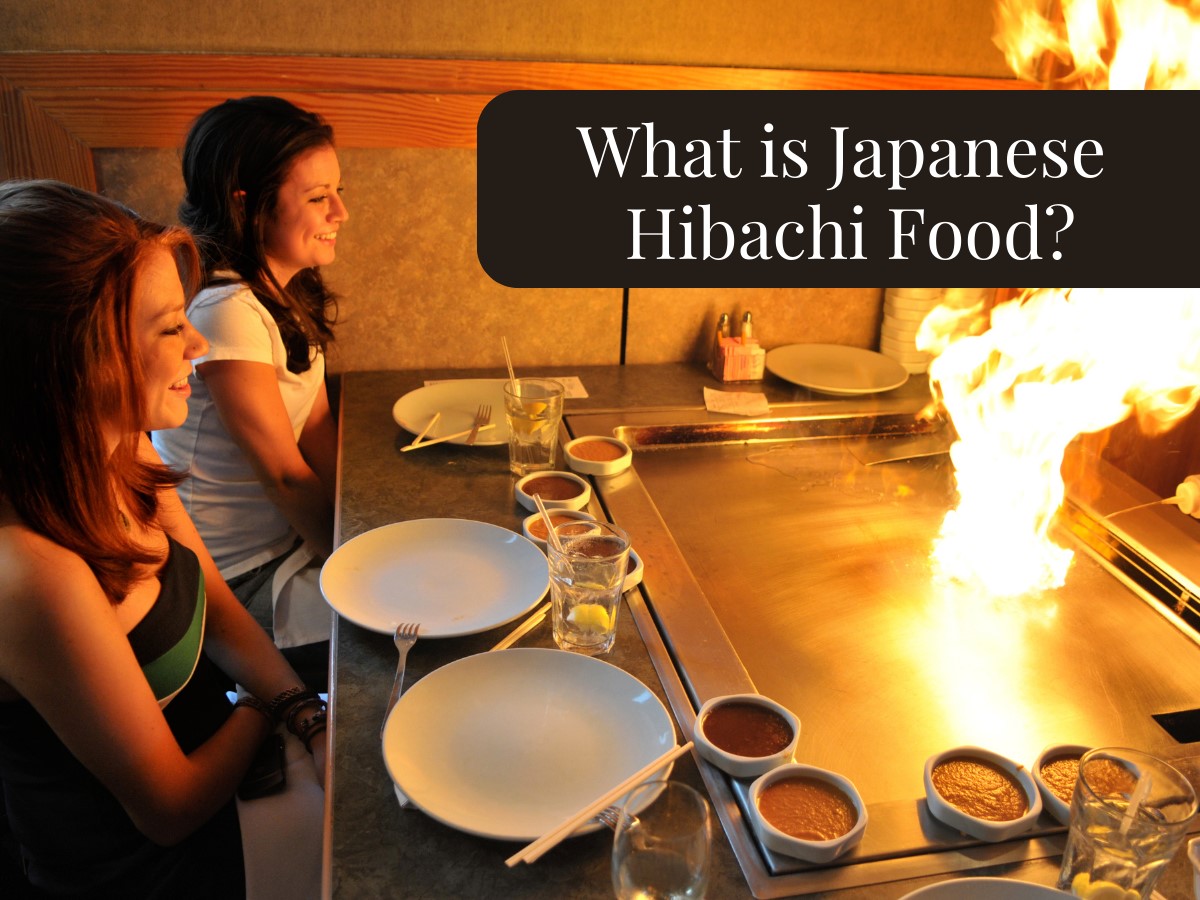Hibachi food is one of the most distinctive aspects of Japanese cuisine- a treasure trove of delectable meals and creative culinary techniques. As a food aficionado, you might have experienced Japanese hibachi food in a restaurant or heard about it from friends. But have you ever contemplated what makes this cooking approach so unusual? Embark on an exploration with me to unveil the mysteries of Japanese hibachi food.
In this article, you will explore the history and origins of Japanese hibachi cuisine as well as its popular recipes and preparation methods. We’ll take a closer peek at the hibachi grill, the traditional Japanese cooking apparatus, indeed, ideal equipment for grilling food to perfection. Get ready to drool!
What is Hibachi?
Hibachi is a Japanese word where “hi” means fire and “bachi” means a bowl. So basically, a hibachi is a large open bowl or a long tray circular, square, or rectangular-shaped, made of either metal, wood, or ceramic material. It was first manufactured back in the Heian period as a heating appliance. Nevertheless, it became a cooking apparatus as a result of emerging demands and innovations. Currently, it’s not only available in Japan but has also spread in American and European communities where some confuse hibachi with a teppan which is an iron girdle used for cooking meals,
Now Hibachi chefs use this heating girdle for grilling, sauteing, stir-frying, pan-frying, charcoaling, and smoking the delectable recipes of Japanese cuisine. Furthermore, hibachi cooking is quick because the apparatus runs on gas or charcoal flames, producing high temperatures and evenly heating the food. A special kind of coal known as “binchotan” is typically used to achieve high temperatures.
What is Japanese Hibachi Food?
Since the hibachi is an ancient Japanese heating and cooking appliance, the food prepared using this device is called Japanese Hibachi food. Hibachi chefs prepare such delectable foods using fresh meat and vegetables with very little addition of condiments and spices. Moreover, the high searing temperature of a hibachi favors using less fat to help cook food. Hibachi can flawlessly cook steak, scallops, chicken, shrimp, and vegetables.
Popular Hibachi Recipes
Popular Japanese hibachi recipe includes the following:
- Hibachi chicken (prepared by tendering the chicken with basic seasonings, then searing it with butter and pouring the spicy teriyaki sauce on top.)
- Hibachi shrimp (grilled or stir-fried shrimp drizzled with sweet and tangy Japanese shrimp sauce.)
- Hibachi steak (seared and grilled thick steaks of beef or lamb pored on top with an umami gloss and mushroom sauce.)
- Hibachi vegetables (hibachi can cook various kinds of sides, salads, and main courses with succulent and seasoned vegetables.
Why Does Everyone Love Hibachi Food?
Hibachi cuisine is an exciting devouring experience that everyone enjoys since it appeals to all the senses. The searing sounds of the hot grill, the irresistible aroma of perfectly grilled meats and vegetables, and the mouth-watering flavors of the food all combine to create a truly delectable sensorial venture.
Hibachi food has a mouthwatering flavor, tempting aroma, and a beautiful presentation. With its soaring flames and spectacular cooking methods, the hibachi grill is a culinary masterpiece as a standalone device that can take every Japanese recipe to a whole new level.
But in addition to being a sensory delight, hibachi food also has the potential to evoke sentiments and memories. Hibachi food is nostalgic and soothing since it is frequently connected to celebrations and special occasions. In addition to enhancing the enjoyment of the meal, the communal dining experience at hibachi restaurants develops a sense of connection and friendship. Hibachi food is a popular meal that anybody may enjoy thanks to various features.
Is Hibachi Food Healthy?
Well, it’s the recipe and not the hibachi that decides whether a food is healthy. However, one can make use of the high temperature of hibachi to limit the fat addition, thereby resulting in less fatty food. It’s good if you prefer grilling and sauteing meats and vegetables rather than frying them. Moreover, opting for the correct cooking technique is the key to a healthy meal.
Use butter/fat only after tendering the meat just to get a beautiful, seared look. Limit the number of sauces and seasonings used with Japanese hibachi foods and avoid the high intake of salt, yolk, soy sauce, and sugars. In a nutshell, try to balance the nutritional value of your Japanese hibachi food by controlling the portion of proteins, carbs, fat, vitamins, and minerals. And enjoy healthy yet delectable hibachi foods.
How to Eat Healthy at a Hibachi Restaurant?
To eat healthily, even if you order a fatty meal at a Hibachi restaurant, you should start well. Begin your dining experience with a glass of water to wash your palate and stomach to reduce the acidic content. Next, get a refreshing salad or an edamame appetizer for adequate protein and dietary fiber.
Then you can take a bowl of healthy and comforting soup such as miso soup. This first main course will make you feel fuller and provide you with enough energy to readily digest the special hibachi meal you will have next. Lastly, finish your meal with a small dessert or green tea to quench the sweet cravings and cleanse the palate.
Conclusion
In a nutshell, Japanese hibachi food is a distinctive and thrilling culinary experience that incorporates mouthwatering ingredients, skilled grilling techniques, and visually compelling plating. So, whether you’re a food lover looking to try something new or simply seeking a memorable dining experience, hibachi food is sure to leave a lasting impression.
But, as with any cuisine, keeping your health and well-being in mind is crucial. Choosing lean proteins like chicken, fish, or tofu and including a lot of veggies in your meal are two ways to make hibachi meals nutritious. You can also choose customized condiments and sauces on the side to limit the number of additional calories and sugars in your dish. Do try this unforgettable gastronomic experience, and you won’t be disappointed.

